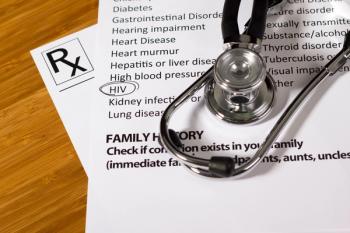
The Importance of Early Treatment for Shingles
Early treatment of shingles reduces symptoms and risk of serious complications.
Herpes zoster (shingles) is not only painful and can significantly alter daily life for sufferers, but it can also leave them with devastating, long-lasting
The typical shingles outbreak often starts with a general feeling of unwellness or fatigue. Other early signs and symptoms include mild skin irritation; a burning, tingling, itching, or numbness concentrated in 1 small area on 1 side of the body; aching muscles, fever, headache, chills, and gastrointestinal distress like nausea, vomiting, and diarrhea. Pain can be intense and stabbing, and it usually worsens over the course of the illness.
Within 5 days of the first symptoms, an itchy and burning rash comprised of blisters filled with clear fluid typically forms. This is the infectious period, lasts 7 to 10 days until the blisters scab over, dry up, and grow smaller.
Individuals who experience these symptoms and have a history of chickenpox should consider the likelihood of shingles and seek a medical diagnosis. This is particularly true if blisters develop on the face.
“Blisters near or in the eye can cause lasting eye damage or blindness,” noted the
The risk of developing shingles increases for people over the age of 60; cancer, HIV and organ transplant patients; diabetics and anyone who is under a lot of stress.
Antiviral medicines-including acyclovir, famciclovir, and valacyclovir-can shorten the length and severity of the illness. According to the
OTC and prescription pain medications can be used as needed. Itchiness can be alleviated by using wet compresses, calamine lotion, and colloidal oatmeal baths.
Postherpetic neuralgia (
The risk of developing PHN, its duration, and severity increases with age. Additionally, its incidence is greater among immunocompromised individuals, those who have pain during the early stages of shingles, and those who experienced a severe rash that covered a large portion of skin. Patients over the age of 60 who do not seek treatment for the illness are more likely to develop PHN than those who are treated.
Other complications of shingles may be rare, but serious, including
Although there is no cure for shingles, an effective vaccination against it is available as the first line of defense.
References:
1. Shingles. National Institute on Aging. Last reviewed October 29, 2018. Accessed April 21, 2020.
2. Treating Shingles. CDC. Last reviewed July 1, 2019. Accessed April 21, 2020. https://www.cdc.gov/shingles/about/treatment.html
Newsletter
Pharmacy practice is always changing. Stay ahead of the curve with the Drug Topics newsletter and get the latest drug information, industry trends, and patient care tips.

















































































































